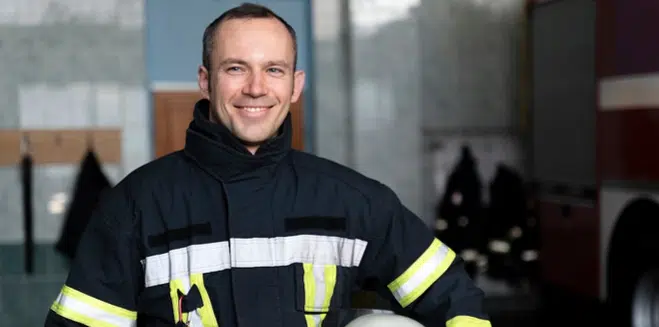Limited knowledge of respiratory protective equipment (RPE) can kills or seriously injurer workers every year. Breathing apparatus (BA) are vital to your workplace’s safety equipment. Employers must know the different types of BA equipment they could use to protect workers.
Respirators remove harmful substances from the air. A breathing apparatus (BA) is a specialised protective gear, this requires a trained operator. Employers must understand how this specialist safety equipment can protect a worker’s life when working in confined spaces.
Continue reading to understand an employer’s duty for workplace safety and the critical need for dependable equipment.
Why might workers need a breathing apparatus in the workplace?
Respiratory protective equipment (RPE) is a piece of personal protective equipment (PPE) that protects workers in hazardous environments. Workers may require RPE to protect themselves from exposure to harmful substances or oxygen-deficient atmospheres. RPE may be necessary when other control measures are either impossible or insufficient. Employers must choose between the two types of PPE: respirators or breathing apparatus (BA).
Compared to respirators, breathing apparatus (BA) is a specialist respiratory protection equipment workers may need to enter confined spaces. A breathing apparatus (BA) is essential when oxygen levels are deficient or contain flammable or toxic fumes. These hazardous environments can occur in confined spaces on vessels but are just as likely on land. Environments may require the selection of the appropriate breathing apparatus, which may include trenches, silos, or tanks.
What regulations do employers need to consider for breathing apparatus use?
Employers must understand the current legislation for the Approved Code of Practice (ACOP), permit to work, and risk assessments. Employers should only use BA to control exposure after taking all other reasonable measures. The workplace must conduct a complete risk assessment to determine whether RPE is necessary.
Legislation requires you to provide a safe working environment. The Health and Safety at Work Act and the Management of Health and Safety at Work Regulations provide a starting point. Employers must also consider using RPE based on your Control of Substances Hazardous to Health Regulations (COSHH) risk assessment.
Employers are responsible for ensuring a risk assessment correctly identifies the correct BA. When choosing BA, employers must consider:
- The requirements for the wearer, task, and the environment,
- Whether the BA reduces exposure to hazards and protects workers’ health.
How do employers choose the correct breathing apparatus?
To choose the correct BA, a workplace risk assessment identifies the potential risks. When choosing the correct BA, the employer may consider:
- Respiratory risks for the task,
- Forms of substance,
- Duration of use,
- Tasks performed,
- The individual wearer,
- The environment.
Employers can choose from three forms of BA equipment after assessing the circumstances:
Self-Contained Breathing Apparatus (SCBA)
A self-contained breathing apparatus (SCBA) protects workers from continued toxic gases or oxygen deficiency in a hazardous environment. Employers can choose between open circuit and closed circuit SCBAs for the worker’s air supply.
- Closed circuit SCBAs can provide workers with up to an hour of breathing when they need a long duration of air. Closed SCBAs purify the air by recirculating and removing carbon dioxide.
- Workers use open circuit SCBAs between 10 and 30 minutes for a shorter duration. They provide constant oxygen flow into a hood or face mask.
An SCBA set consists of three main parts. These parts are a compressed air cylinder, a back plate with a pressure regulator, and a face mask.
The back plate holds the cylinder, and the face mask protects the user’s face. Both types of SCBAs enable workers to perform tasks in hazardous environments safely. The employer must choose the correct SCBA type for duration and circumstance.
Emergency Life-Saving Apparatus (ELSA)
An Emergency Life-Saving Apparatus (ELSA) provides the wearer mobility. Emergency escape breathing equipment provides a steady air stream for up to 30 minutes. In situations where a hazardous environment becomes life-threatening, ELSA becomes essential.
Airline or Long Duration Breathing Apparatus
Airline or Long Duration Breathing Apparatus (BA) provides flexibility for prolonged periods. When the worker needs to breathe air for a long duration, an Airline BA does not require carrying. The Airline BA equipment operates alongside the workers, allowing mobility during long air durations.
An Airline BA uses either a high-pressure cylinder source or a medium-pressure compactor that feeds a hose of up to 100 metres. A full facepiece mask provides clean air to the worker.
Workers in confined spaces are more suited to an Airline BA because of their compact size. The compact size ensures that the equipment does not impede work. However, employers must ensure that they back up the equipment with a secondary supply in case of failure.
What is the employer’s responsibility?
Employers must maintain inspection and maintenance procedures for testing and checking national legislation. Establishing a maintenance and inspection schedule for the breathing apparatus is essential.
Employers must conduct visual inspections, check pressure cylinders, and test air quality monthly. Additionally, employers must keep a record of each examination and test. Proper examination ensures that they are in optimal working condition when needed.
You must follow the manufacturer’s instructions for cleaning. Employers must also inspect safety harnesses, lifelines, and location lines for wear or tear before use. Employers must recharge a cylinder after use regardless of length.
Workers in confined spaces must also have a reliable communication system for their safety. Make sure to conduct regular training and drills to ensure that workers are well-prepared for any emergency.
Lastly, having clear emergency procedures and protocols for using breathing apparatus is essential. These protocols mitigate risks and ensure a safe working environment.
For more information about our breathing apparatus, see below:
Written by Megan Ellis (Cardiff University)






